Scope of work letter template
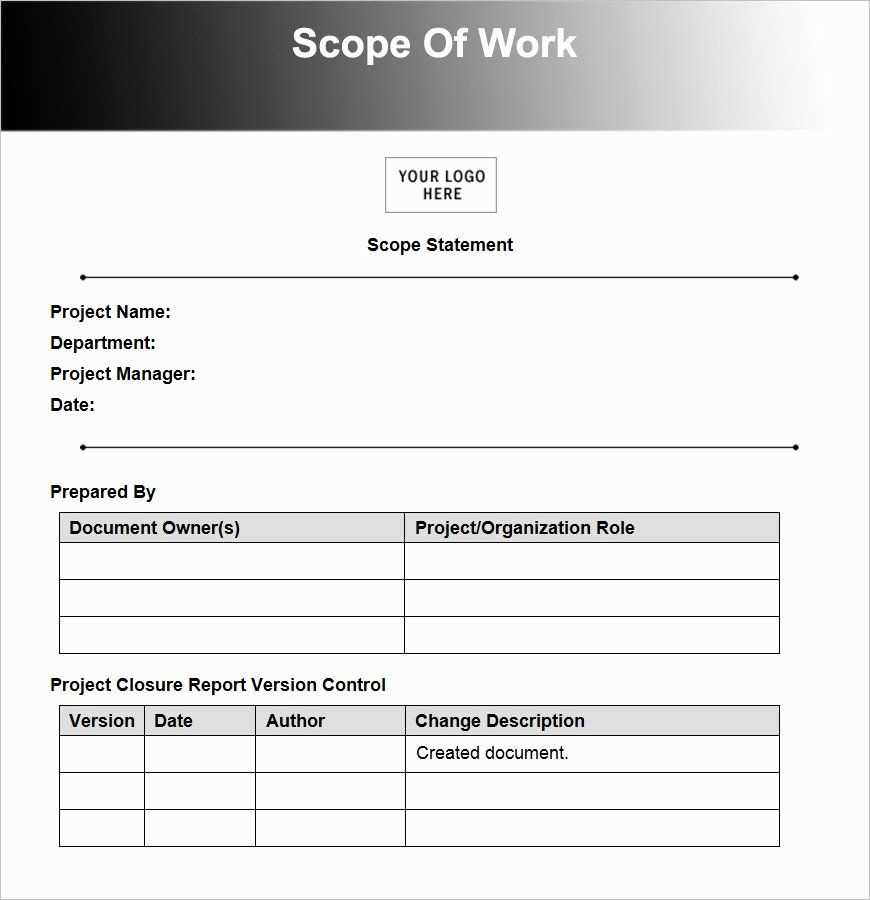
Creating a clear Scope of Work (SOW) letter is critical for defining project expectations and deliverables. This document outlines specific tasks, milestones, deadlines, and responsibilities, ensuring both parties understand their roles and commitments.
Key Elements of a Scope of Work Letter
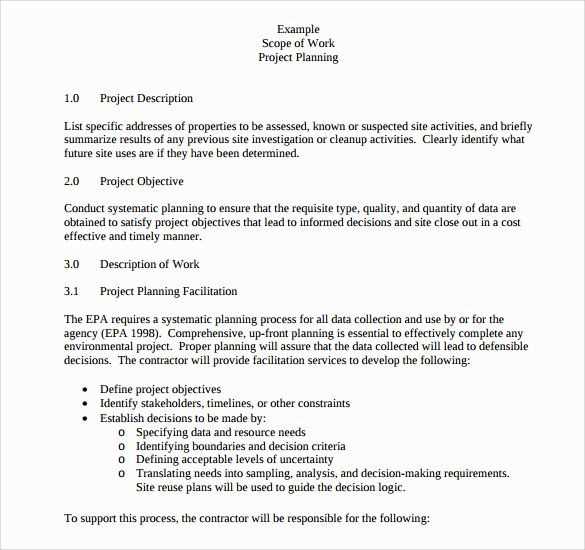
A well-crafted SOW letter should include the following sections:
- Project Title: Include the project’s name or identification number for easy reference.
- Objectives: Clearly describe the purpose and goals of the project. Outline what needs to be accomplished.
- Scope Description: Detail the work to be performed. Be specific about tasks, activities, and services provided.
- Timeline: Set clear deadlines for each phase of the project, including start and end dates.
- Roles and Responsibilities: Assign responsibilities to each party, specifying who will handle which tasks.
- Deliverables: List all tangible and intangible items to be delivered upon completion, such as reports or products.
- Payment Terms: Define the payment schedule, terms, and any conditions for invoicing.
- Approval and Signatures: Include spaces for both parties to sign, confirming the agreement.
Template Example
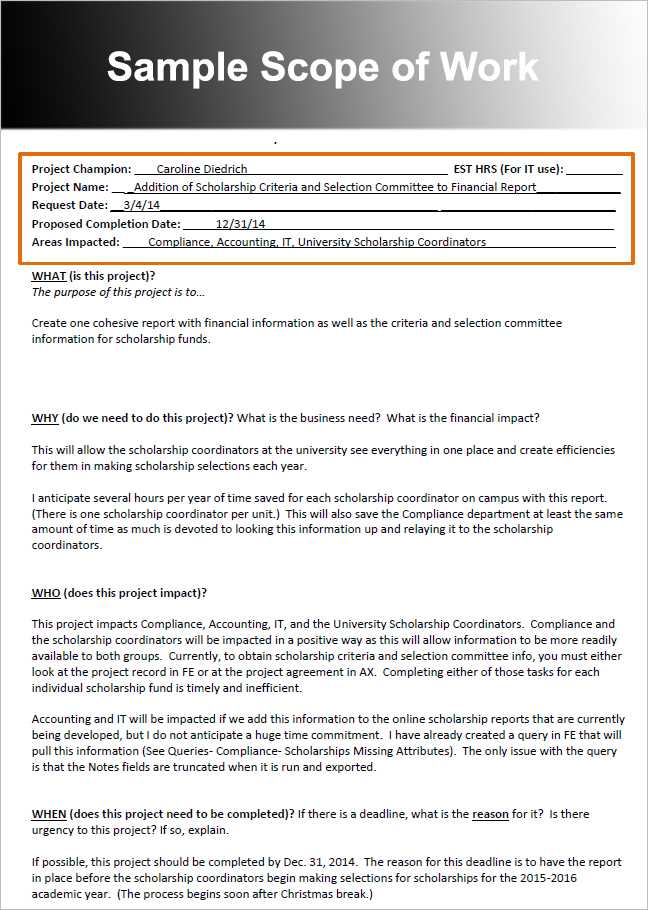
Here’s a simplified template for a Scope of Work letter:
[Your Name] [Your Address] [City, State, ZIP Code] [Date] [Recipient’s Name] [Recipient’s Address] [City, State, ZIP Code] Subject: Scope of Work Agreement for [Project Name] Dear [Recipient’s Name], This letter outlines the Scope of Work for the [Project Name], agreed upon by [Your Company Name] and [Recipient’s Company Name]. The details below summarize the tasks, timelines, and responsibilities as part of the agreed project. 1. Project Title: [Project Name] 2. Objectives: [Clearly state the project’s goals] 3. Scope of Work: [Detailed description of tasks and services to be provided] 4. Timeline: [Start Date] to [End Date] 5. Roles and Responsibilities: - [Your Company Name]: [List your responsibilities] - [Recipient’s Company Name]: [List their responsibilities] 6. Deliverables: [List all deliverables] 7. Payment Terms: [Detail the payment schedule] 8. Approval: [Provide space for signatures] Please sign below to confirm acceptance of the terms stated above. Sincerely, [Your Name] [Your Title] [Your Company Name] Accepted by: [Recipient’s Name] [Recipient’s Title] [Date]
Additional Tips for Writing a Scope of Work Letter
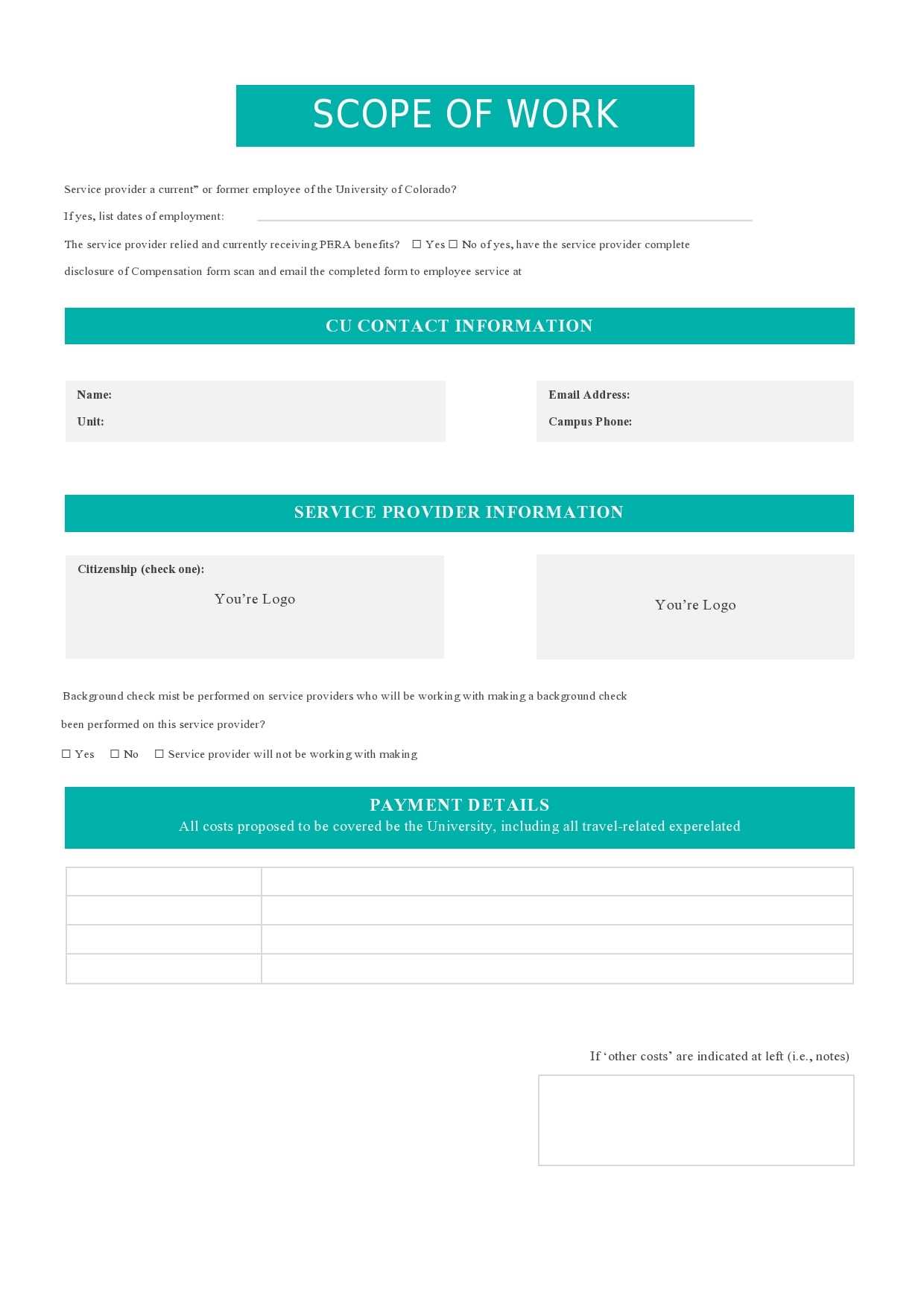
- Be clear and concise: Avoid ambiguity in describing tasks, responsibilities, and deliverables.
- Set realistic timelines: Ensure that the project deadlines are achievable based on resources and scope.
- Communicate frequently: Keep all stakeholders informed of progress and any changes to the scope.
- Review and revise: Before finalizing the letter, ensure it accurately reflects the agreement and addresses all concerns.
Following these guidelines will help you create a comprehensive and effective Scope of Work letter, ensuring clarity and mutual understanding throughout the project.
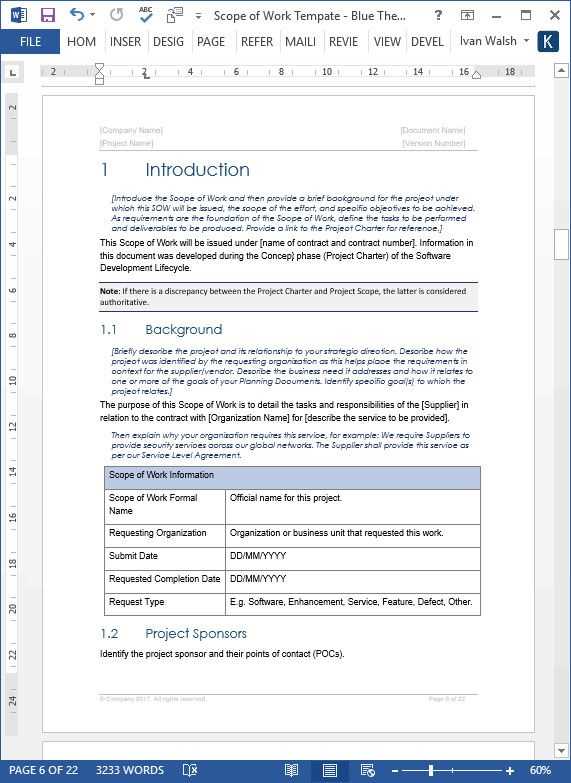
Here’s the detailed plan with practical subheadings as requested, using HTML tags: Scope of Work Letter Template. How to Clearly Outline Project Deliverables and Tasks.
The first step in drafting a Scope of Work (SOW) letter is to outline the specific deliverables of the project. Be clear about what the expected outcomes are and when they should be achieved. For example, if you’re working on a website design, specify the pages that need to be created and the features they should have. Include details like “Homepage with responsive design” or “Contact form integration” to leave no room for ambiguity.
Next, define the tasks needed to complete each deliverable. Break the work into manageable units. For instance, for the task of building a homepage, you might list smaller tasks such as “Design layout” and “Code front-end components.” Be specific about who is responsible for each task, and establish deadlines to keep things on track.
Another key section is to describe the timeline. Set realistic deadlines for each deliverable and milestone. Use bullet points or a simple table for clarity. For example, you might specify “Design phase: February 1 – February 10” and “Development phase: February 11 – February 20.” Ensure these dates are feasible for both parties involved.
Clarify the payment structure in your SOW letter. Include the payment milestones tied to specific project deliverables or completion dates. For example, a payment of 30% upon signing the contract, another 40% after the design phase, and the remaining 30% after the project is finished. This ensures both parties are aligned on the financial aspects throughout the project.
Lastly, identify any assumptions or exclusions. For example, if the client is expected to provide content or assets, state that clearly in the letter. It helps avoid misunderstandings and sets expectations upfront.